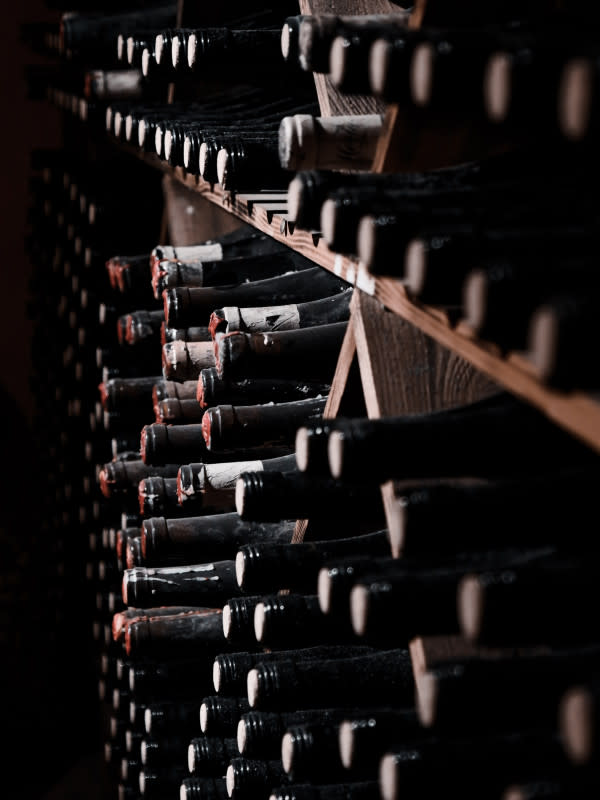How to Prevent and Clean Mold in Your Wine Cellar
Wine cellars face the subtle challenge of mold growth. Whether you favor a Cabernet Sauvignon, Chardonnay, or the effervescence of a sparkling wine, taking care of any wine collection requires attention to indoor mold prevention. Keeping your wine cellar in good condition starts with understanding the impact of humidity on mold growth, and learning how to monitor for and remove mold before it affects your corked collection.
The Impact of Humidity on Mold Growth
Humidity, a necessary companion to the art of wine preservation, can inadvertently create the perfect environment for mold spores. When humidity levels surpass 70%, the excess moisture creates an environment that invites the presence of mold. The porous nature of cork in wine bottles can absorb this moisture, potentially compromising the wine quality. This delicate balance underscores the need for vigilant humidity control and regular inspections in your wine sanctuary.
“It’s best practice to replace your 1-inch air filters at least every three months, and it’s also important to have an air filter that captures pollutants like dust, dirt, mold spores, bacteria and viruses to help improve your indoor air quality, like the Filtrete™ MPR 1500," explains Andy Fox, Filtration and Indoor Air Quality Specialist at 3M. "If you have pets, burn candles, or are remodeling in other areas of your home, you should consider replacing your air filter even more frequently.”
Mold Prevention Strategies
Manage humidity. Wine cabinets and basement wine cellars maintain higher humidity levels than the rest of the home. Optimal conditions range between 50-70%. This range ensures optimal cork integrity while avoiding excessive moisture that encourages mold. “[In the rest of your home,] the US EPA recommends keeping humidity levels below 60% and ideally between 30-50%," points out Fox. ”Maintaining healthy humidity levels helps keep mold and mildew away. Mold needs moisture to grow, so the humidity levels must be maintained to avoid the risk of mold spread and growth."
Use fans for air circulation. Allow gentle air circulation to prevent stagnant pockets of humidity. Having a well-ventilated area is crucial.
Use mold-resistant materials. Opt for paints and materials that resist the growth of mold.
Consistent temperature. Maintain a stable temperature between 55-58°F (12-14°C). Fluctuations can contribute to mold growth in wine cellars.
Routine checks. Regularly inspect your cellar for leaks, water damage, or signs of mold. Regularly clean and dust surfaces to eliminate potential sources of mold spores. Early detection and swift action are the foundation of effective prevention.

Photo by Emre Katmer on Unsplash
How to Remove Mold
Safety first. Prioritize safety by wearing protective gear – gloves, a mask, and safety goggles – to minimize exposure to airborne mold spores during the cleaning process.
Isolate and remove affected items. If the spore concentration is localized, isolate the area to prevent further spread. Remove affected items for inspection and careful cleaning.
Dry clean affected areas. Begin with dry cleaning using a soft brush or cloth to eliminate loose fungal spores. Dispose of cleaning materials cautiously.
Use a natural cleaning solution.
- Use vinegar acetic acid to scrub hard, non-porous surfaces. Vinegar's natural acidity combats mold effectively and is an easy alternative to bleach.
- For stubborn black mold, apply hydrogen peroxide directly or as a solution with water. Allow it to sit before gently scrubbing.
- Create a paste with baking soda and water for a natural antifungal solution. Apply, scrub, and rinse to eliminate mold and odors.Use commercial cleaners, or get professional mold remediation. Explore specialized mold cleaning products and bleach solutions that can help prevent mold formation and mold infestation. In case of extensive mold issues, consult mold remediation professionals.
Benefits of Charcoal Filters
“A ‘charcoal’ filter can also be described as an activated carbon filter. The ‘activation’ process for carbon creates numerous tiny pores in the carbon that can then trap many odors and VOC’s that cannot be trapped by a standard filter," explains Fox. "The amount of carbon used in a filter a top consideration for how well it will perform, so look for filters with a high amount of activated carbon, like the Filtrete™ MPR 1200 Odor Reduction Air Filter, where the activated carbon layer acts as odor eliminator for pet smells, smoke, cooking, mildew and cleaning chemicals.”
By nurturing a balance between humidity control, vigilant cleaning practices, and thoughtful prevention, you can safeguard your wine cellar from mold growth. Work to ensure that your wine collection remains impeccably preserved. Cheers!
